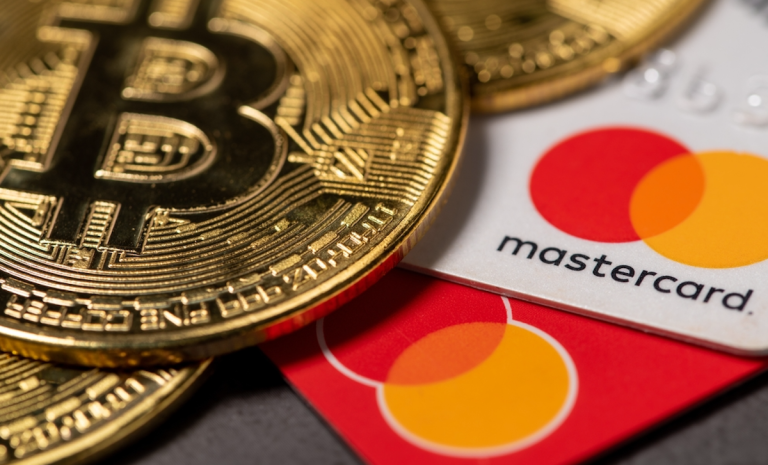
More than half a billion people own crypto, primarily as a speculative investment.
And now, with the news Thursday (Sept. 5) that Mercuryo has launched a euro-denominated debit card that allows users to spend bitcoin and other cryptocurrencies directly at over 100 million merchants using Mastercard’s network, those people can start using their crypto to actually pay for things in the real world.
“Individuals holding crypto who want a convenient way to use their assets for everyday purchases can now benefit from Mercuryo’s Spend crypto debit card, which allows users to spend their crypto directly from their wallet. This eliminates the need for an intermediary,” Mercuryo said in a statement, noting that the new crypto payment solution “integrates with both Apple Pay and Google Pay.”
Users add funds to their debit card by selling their cryptocurrency of choice, which is immediately made available on the card balance. Compared to the one to two days it typically takes money to appear on a bank card using traditional crypto off-ramping processes, this experience is meant to facilitate the ability for crypto holders to spend their digital assets in the real world or across eCommerce channels in real time.
PYMNTS Intelligence has found that a positive checkout experience keeps customers coming back to a merchant — and that debit cards are now the preferred method underpinning digital wallet payments.
Read more: Web3 Fans Say Apple NFC Chip Access Will Jumpstart Crypto Payments Era
The introduction of an easy-to-use crypto debit card could accelerate the mainstream adoption of cryptocurrencies by making them more accessible and convenient for non-tech-savvy users. For many, dealing with crypto requirements like private keys, wallets and exchanges can be intimidating. The ability to spend crypto via a familiar interface like a debit card makes the experience more user-friendly. As more consumers use these cards, businesses may start accepting cryptocurrencies directly, further embedding crypto in the global economy.
The shift could also lead to increased demand for businesses to integrate crypto payments within their existing payment infrastructure. Payment processors and merchant acquirers would need to adapt to this emerging trend, potentially leading to a broader range of crypto-related financial services and products.
And the debit card is not even the only crypto payment offering Mastercard launched this summer. In August, Mastercard introduced a crypto-to-fiat card with Web3/blockchain platform MetaMask and cryptocurrency payments firm Baanx. The MetaMask Card lets MetaMask wallet customers use crypto for everyday purchases in fiat currency wherever Mastercard is accepted. The card is being piloted on a limited basis — a few thousand digital-only cards — for European Union and U.K. users.
Elsewhere, Wirex has launched its mainnet, making its decentralized payment method, Wirex Pay, live and ready to use. This blockchain-based payment method allows users to make transactions using cryptocurrencies at more than 80 million merchants in more than 200 countries, the company said Aug. 28.
This news comes about a month after Wirex and Visa teamed up to promote the use of digital currencies in Europe and the United Kingdom, saying their collaboration will “explore new opportunities to leverage and integrate innovative Visa cards and reduce friction in payment experiences.”
Research in “The Embedded Finance Ecosystem: Logistics and Wholesale Trade Edition,” a PYMNTS Intelligence and Carat from Fiserv collaboration, found that a majority of marketplaces (57%) are “highly interested” in further innovating their existing digital wallet offerings.
See also: Crypto Is Minting Millionaires, but Its Payment Utility Remains Uncertain
The use of cryptocurrencies for payments is still heavily regulated, and introducing such a product could face challenges across different European jurisdictions. Anti-money laundering (AML) and know-your-customer (KYC) requirements would still apply, and companies offering such products would need to ensure compliance with EU-wide regulations like the Markets in Crypto-Assets (MiCA) framework.
Any success crypto payments might have could depend on how well the particular mechanism of choice integrates with these regulations. If it manages to comply while maintaining the privacy and autonomy of non-custodial wallets, it could serve as a blueprint for other markets and regions to follow.
“It’s important to know that crypto is not just bitcoin and Doge and NFTs,” Solana Foundation Head of Payments Sheraz Shere told PYMNTS in May. “… Blockchains are really alternative rails for payments and financial assets.”
And PYMNTS Intelligence finds that blockchain technology, the fundamental technology underpinning cryptocurrencies and digital assets, could have tremendous potential for use in regulated industries, such as finance and healthcare.
Of course, it all comes against a payments and commerce backdrop where other advances and innovations are simultaneously making strides.